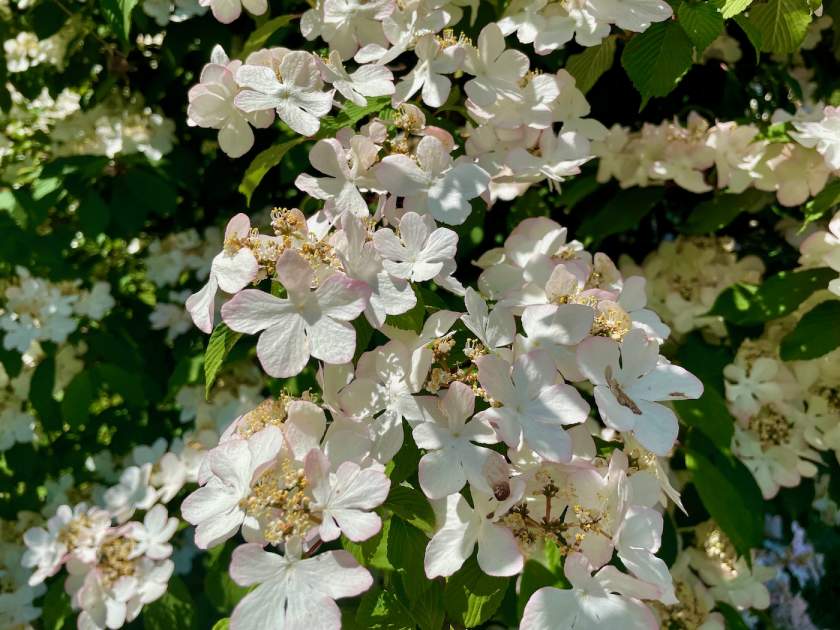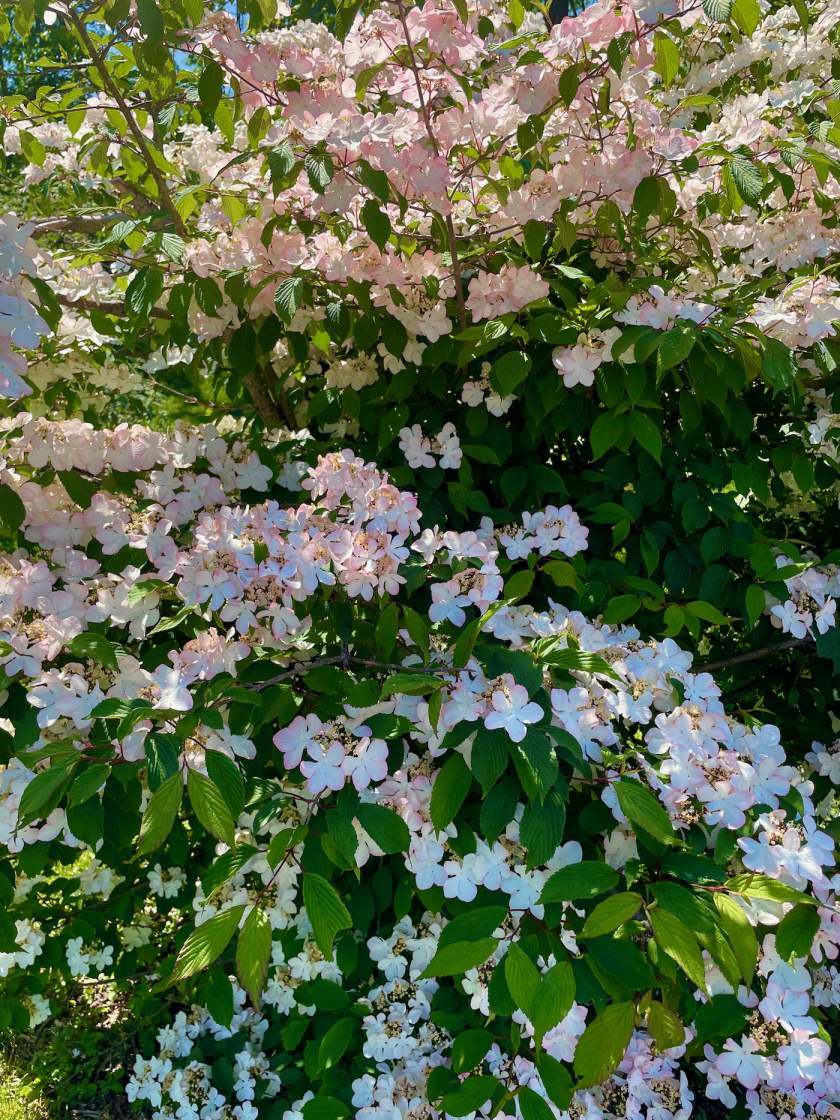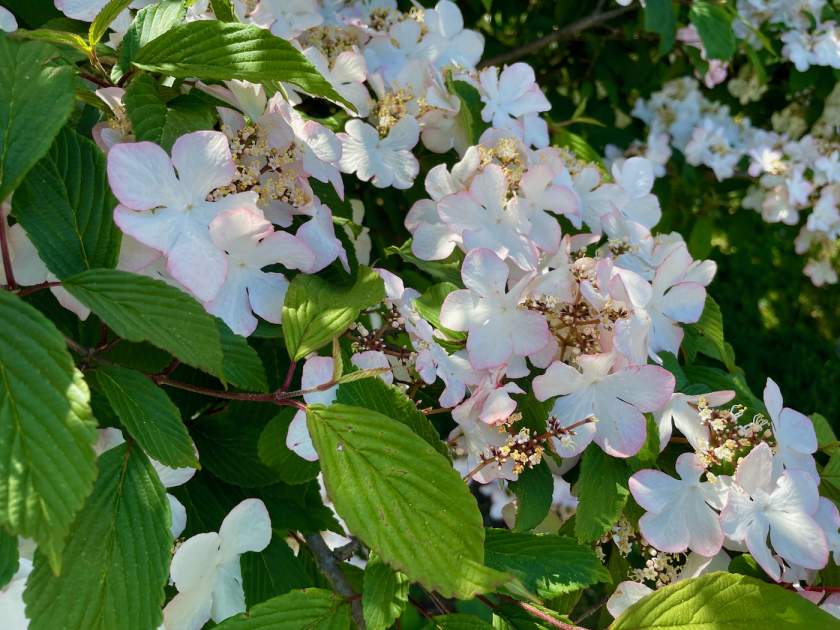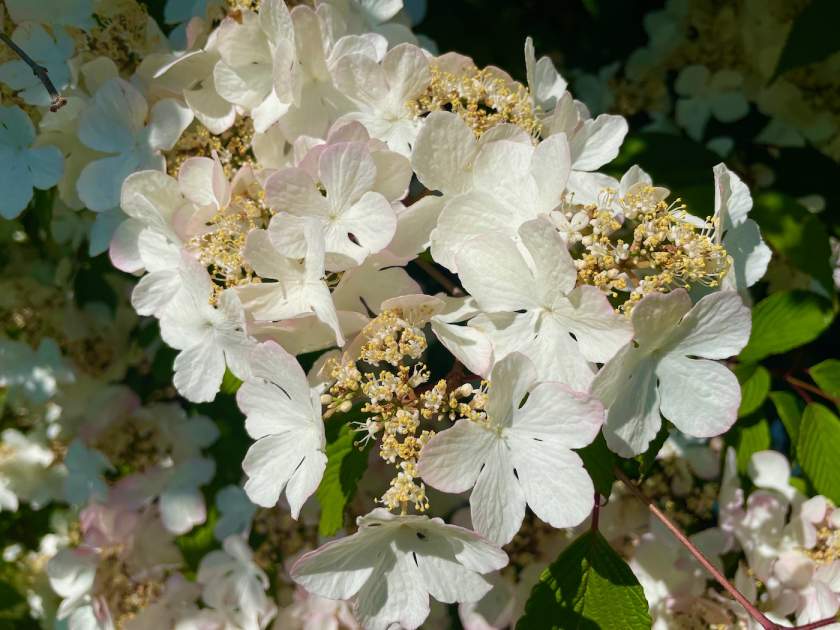Viburnum plicatum ‘Roseum’: A Beautiful Japanese Snowball Shrub for Your Garden
Introduction: Viburnum plicatum ‘Roseum’, commonly known as Japanese Snowball, is a deciduous shrub celebrated for its stunning display of showy, white flowers that age into a delicate pink. With its compact size and attractive foliage, this cultivar has become a popular choice for adding elegance and charm to gardens. In this article, we will delve into the background, characteristics, and cultivation of Viburnum plicatum ‘Roseum’, providing valuable information for gardeners interested in growing this delightful shrub.
Background and Characteristics: Viburnum plicatum ‘Roseum’ belongs to the Adoxaceae family and is native to Japan. While information regarding its discoverer or publisher is not readily available, this cultivar’s popularity and beauty have made it a beloved addition to gardens worldwide.
This deciduous shrub typically reaches a height of 8-10 feet and a width of 6-8 feet, making it relatively compact and suitable for various garden sizes. The blooms of Viburnum plicatum ‘Roseum’ are arranged in clusters that can measure up to 6 inches in diameter. Although the individual flowers are small, their abundant presence creates a breathtaking floral spectacle. Starting as white blossoms, they gradually transition to a charming pink shade as they mature.
The leaves of Viburnum plicatum ‘Roseum’ are oval-shaped and possess a dark green hue. Arranged opposite each other on the branches, they create an attractive backdrop for the beautiful flowers. Additionally, during the fall season, the foliage undergoes a stunning transformation, turning into a brilliant shade of red.
Cultivation of Viburnum plicatum ‘Roseum’:
Sunlight: Viburnum plicatum ‘Roseum’ thrives in full sun to partial shade conditions. It prefers at least 6 hours of direct sunlight each day for optimal growth and flowering.
Watering: During the first year after planting, Viburnum plicatum ‘Roseum’ requires regular watering to establish a strong root system. Deep watering is recommended, especially during hot and dry periods. Once established, the shrub becomes more drought-tolerant, but it still benefits from occasional deep waterings during prolonged dry spells.
Soil: This cultivar thrives in moist, well-draining soil. It is important to ensure that the soil retains moisture without becoming waterlogged. Adding organic matter, such as compost or well-rotted manure, can improve soil fertility and drainage.
Pest and Disease Control: Viburnum plicatum ‘Roseum’ is generally resistant to pests and diseases. However, in humid climates, it may be susceptible to powdery mildew. To prevent or address this fungal infection, it is advisable to apply a suitable fungicide following the instructions on the label. Regular inspection and maintenance practices, such as removing fallen leaves and debris, can also help reduce the risk of pests and diseases.
Fertilization: In the spring, provide Viburnum plicatum ‘Roseum’ with a balanced fertilizer to promote healthy growth and abundant blooms. Alternatively, a light application of compost or well-rotted manure can provide beneficial nutrients to the shrub.
Pruning: To maintain the desired shape and remove any dead or damaged branches, prune Viburnum plicatum ‘Roseum’ in the late winter or early spring before new growth begins. While this shrub can tolerate heavy pruning, it is advisable to prune gradually over several years to avoid shocking the plant.
Propagation:
Softwood Cuttings: During the spring or summer, select softwood cuttings from new growth on the shrub. Cuttings should be approximately 3 inches long and possess at least 2 nodes. Apply rooting hormone to the base of the cuttings and plant them in a well-draining potting mix. Keep the potting mix consistently moist and provide a warm, shady environment. Within 4-6 weeks, the cuttings should develop roots and can be transplanted into larger containers or directly into the garden.
Air Layering: Air layering is another method of propagating Viburnum plicatum ‘Roseum’. In the spring or summer, make a cut in the bark of a healthy stem approximately 1 inch below a node. Remove the bark from the surrounding area and wrap moist sphagnum moss around the cut section. Secure the moss with plastic wrap and keep it moist. After several weeks, roots will form. Once rooted, cut the stem from the mother plant and plant it in a pot or directly in the ground.
By following these cultivation and propagation guidelines, gardeners can enjoy the enchanting beauty of Viburnum plicatum ‘Roseum’. Its magnificent flowers, attractive foliage, and low maintenance requirements make it an excellent choice for hedges, mass plantings, or as a standalone specimen in any garden.







